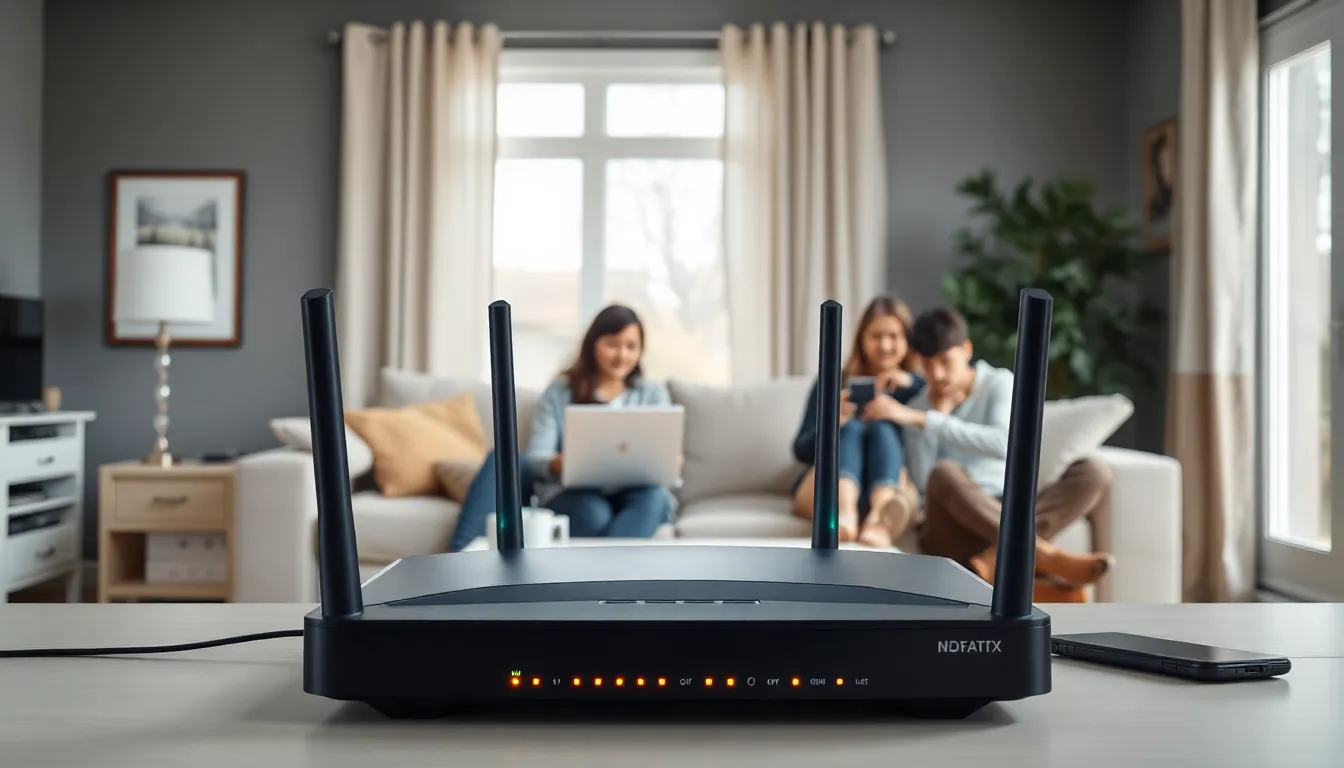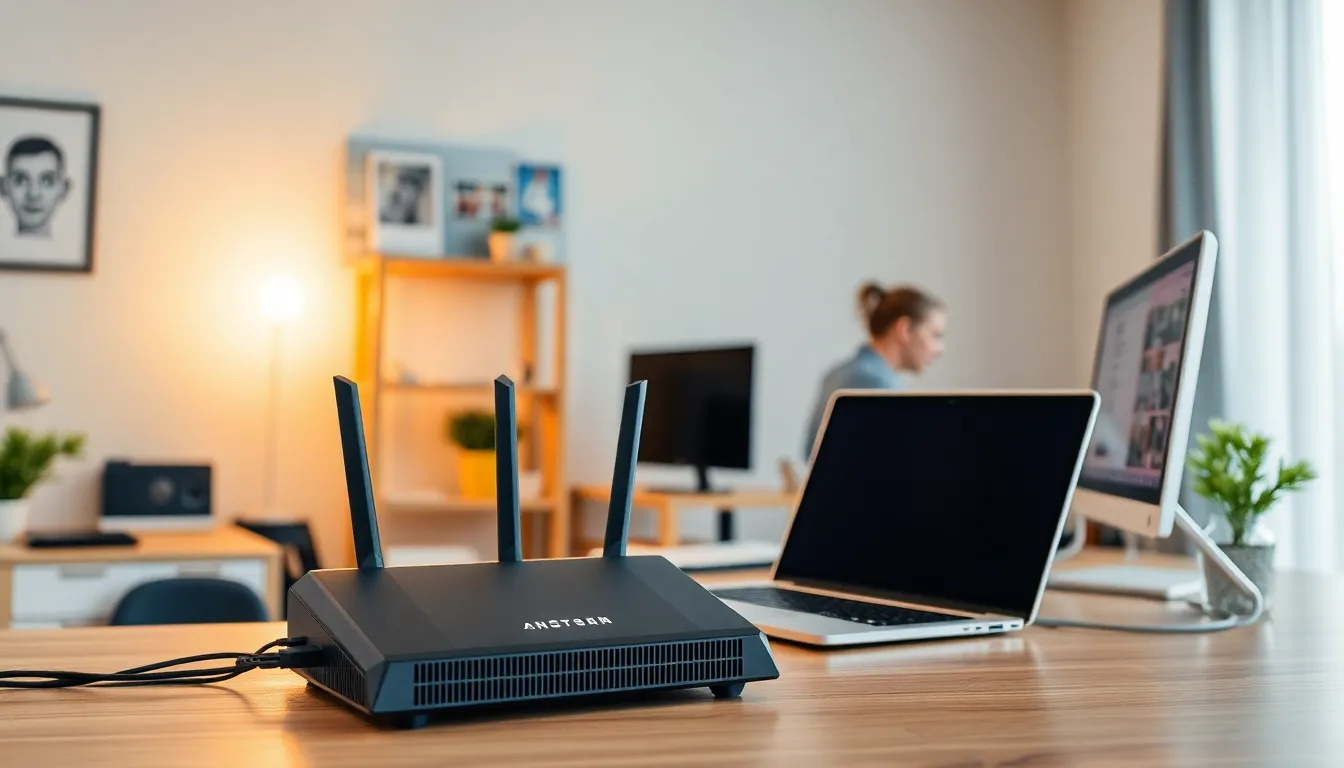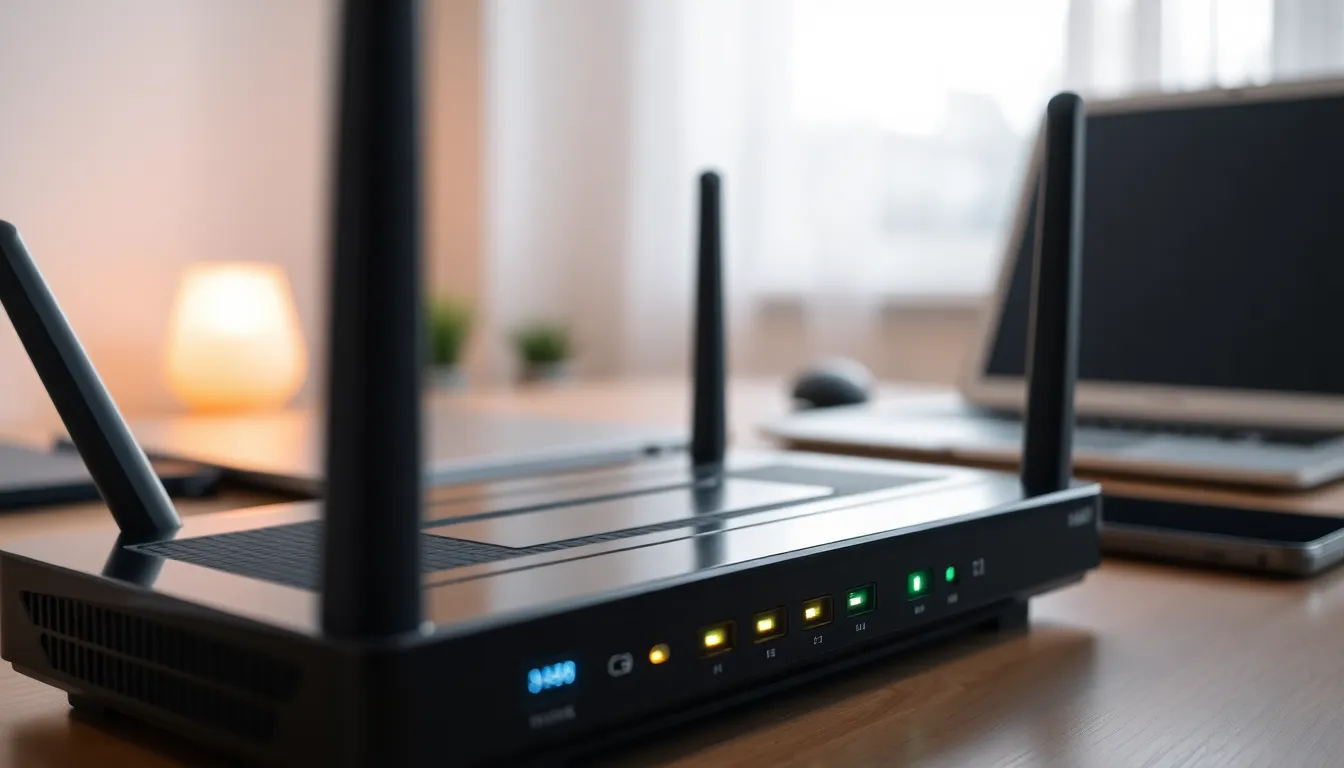In today’s digital world, understanding download speeds is crucial for anyone relying on the internet for work, entertainment, or communication. Mbps, or megabits per second, measures how quickly data is transferred from the internet to a device. It directly impacts everything from streaming movies to video conferencing and online gaming.
But what constitutes a good Mbps download speed? With varying needs and activities, the answer isn’t one-size-fits-all. Whether it’s casual browsing or heavy-duty streaming, knowing the right speed can enhance the online experience. This article dives into the essentials of Mbps download speeds, helping readers determine what’s ideal for their specific internet usage.
Table of Contents
ToggleUnderstanding Mbps Download Speed
Mbps, or megabits per second, is a metric for measuring internet download speed. It indicates how much data can be transferred per second and is crucial for determining the performance of online activities.
Definition of Mbps
Mbps stands for megabits per second, where one megabit equals one million bits. This unit quantifies data transfer rates and is essential for evaluating internet connection quality. Higher Mbps values typically reflect faster download speeds, allowing users to download files, stream videos, and engage in online gaming more efficiently.
How Download Speed Is Measured
Download speed is measured by how quickly data transfers from the internet to a device. Internet service providers (ISPs) calculate this speed under ideal conditions. Speed tests, commonly accessed through various online platforms such as Speedtest.net or Fast.com, allow users to check their current download speeds. These tests reveal Mbps values, helping users assess their internet performance against their needs. Factors like network congestion, hardware quality, and distance from the router can affect these measurements.
Factors Influencing Download Speed



Several factors directly impact download speed, affecting overall internet performance. Understanding these elements helps users optimize their experience.
Internet Connection Types
Internet connection types significantly affect Mbps download speeds. Common types include:
- Dial-Up: Offers maximum speeds of 56 Kbps, suitable only for basic browsing.
- DSL (Digital Subscriber Line): Typically ranges from 1 to 100 Mbps, depending on proximity to the service provider.
- Cable: Provides speeds between 25 and 1,000 Mbps, varying with the plan and usage intensity in the area.
- Fiber Optic: Delivers speeds from 100 Mbps to 10 Gbps, known for high reliability and minimal latency.
- Satellite: Offers 12 to 100 Mbps but can experience delays due to signal travel time.
- Wireless (Wi-Fi): Dependent on the router and distance, speeds can vary significantly, reaching up to several Gbps with modern standards.
Users should select the connection type that aligns with their internet usage requirements.
Network Congestion
Network congestion occurs when excessive data traffic reduces available bandwidth. Key elements include:
- Peak Usage Times: Download speeds often decrease during peak times, like evenings, when many users are online.
- Number of Connected Devices: Multiple active devices can consume bandwidth, leading to slower speeds for each device.
- Router Capacity: Older routers may struggle under high traffic, affecting the distribution of Mbps across connected devices.
- ISP Limitations: Internet service providers may impose bandwidth caps or manage traffic during high-demand periods, impacting overall speeds.
Monitoring network usage can help identify congestion issues and facilitate better performance.
What Is Considered a Good Mbps Download Speed?
A good Mbps download speed depends on the user’s specific needs and activities. Understanding the guidelines for different online activities helps determine the necessary speed for optimal performance.
General Guidelines for Different Activities
- Basic Browsing: Speeds of 1-5 Mbps suffice for simple tasks like browsing websites and sending emails.
- Streaming Music: For uninterrupted audio streaming, speeds of at least 5 Mbps are recommended.
- ** HD Video Streaming:** For streaming in high definition, users should aim for speeds between 5-15 Mbps.
- 4K Video Streaming: Users require speeds of 25 Mbps or higher for seamless 4K streaming.
- Video Conferencing: For smooth video calls, a minimum of 3 Mbps is necessary, with 5-10 Mbps preferred for clearer quality.
- Online Gaming: Speeds of 20-50 Mbps minimize lag and improve overall gaming experiences, though it may not require high download rates.
Recommended Speeds for Streaming and Gaming
- Standard Definition Streaming: 3-4 Mbps typically provides sufficient quality for standard definition (SD) content.
- High Definition Streaming: 5-8 Mbps usually ensures stable streaming for most HD content without interruptions.
- 4K Ultra HD Streaming: 25 Mbps or more supports high-quality 4K content with minimal buffering.
- Gaming Requirements: A range of 25-50 Mbps caters to most online gaming platforms, ensuring smooth gameplay and a competitive edge.
- Multiple Users: For households with several users engaged in streaming or gaming simultaneously, consider speeds above 50 Mbps for optimal performance.
How to Test Your Download Speed
Testing download speed is essential for assessing internet performance. Multiple tools and methods exist to help users accurately measure their speeds.
Tools and Methods for Testing
- Online Speed Test Websites: Websites like Ookla’s Speedtest, Fast.com, and Google’s speed test provide straightforward interfaces to check download speeds. Users initiate a test, and within seconds, they receive Mbps values.
- Mobile Apps: Many apps are available for both iOS and Android, like Speedtest by Ookla and Meteor. These apps offer convenience for users testing speeds on mobile devices.
- Router Diagnostic Tools: Some modern routers include built-in speed test features, allowing users to run tests directly from their network settings.
- Command Line Tools: Users experienced with technology can use command line tools like
pingortracertto diagnose connection quality, though not as user-friendly as other options.
Interpreting Your Results
- Understanding Mbps Values: Higher Mbps values indicate better download speeds. For example, a reading of 50 Mbps supports multiple users streaming or gaming simultaneously.
- Comparing with Standards: Compare results to suggested benchmarks for specific activities. Basic browsing should show at least 1-5 Mbps, while 4K streaming should exceed 25 Mbps.
- Evaluating Consistency: Conduct multiple tests at different times to gauge consistency. Fluctuations may suggest congestion or other issues.
- Documenting Results: Keep records of test results over time to identify trends or problems with ISP performance.




